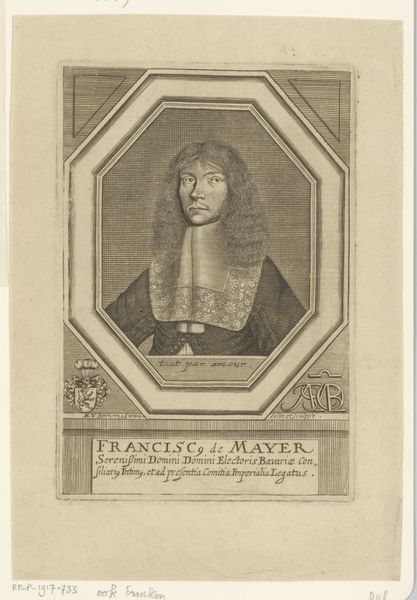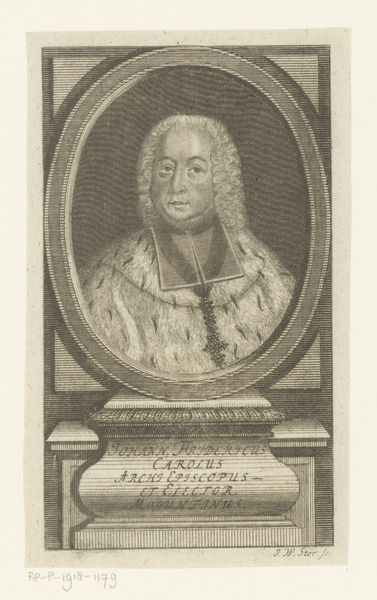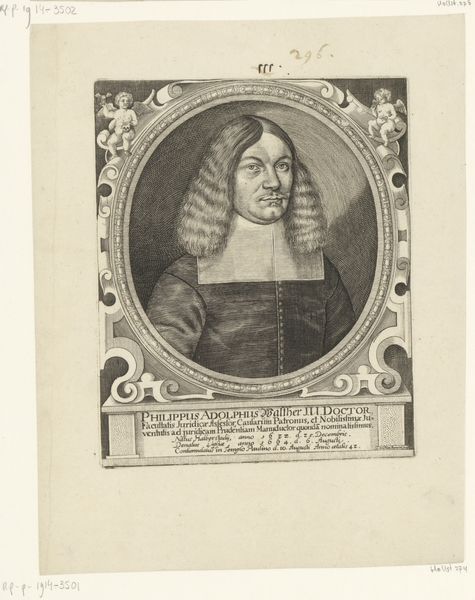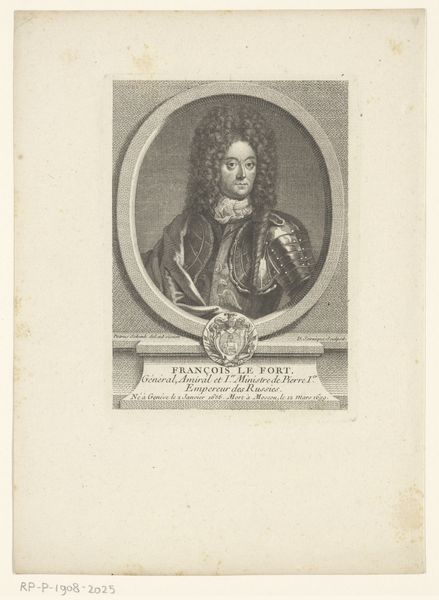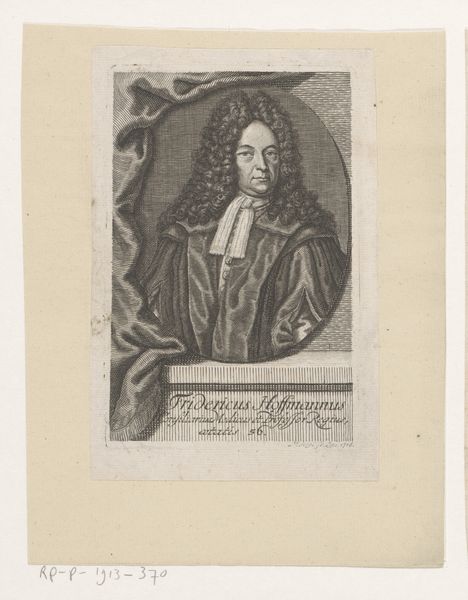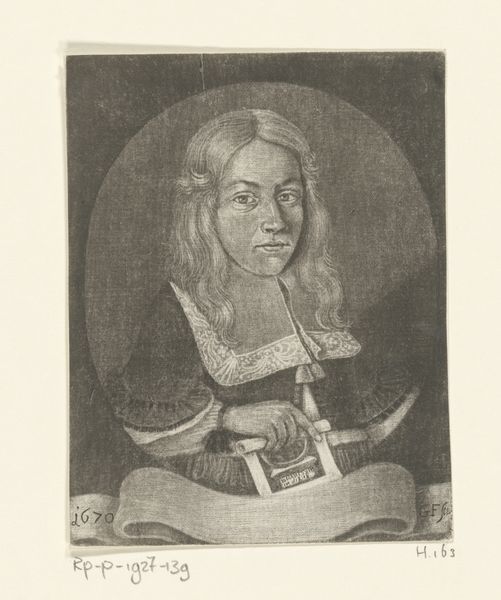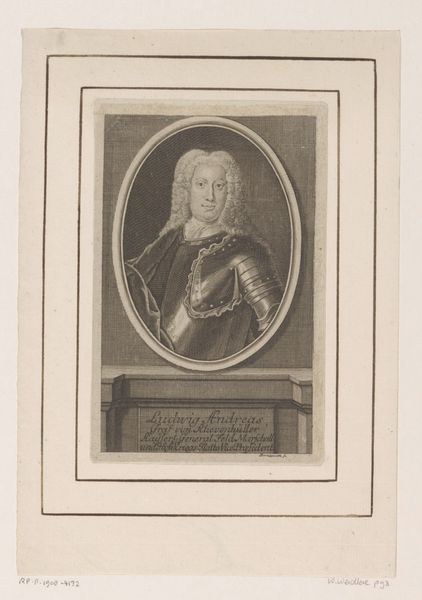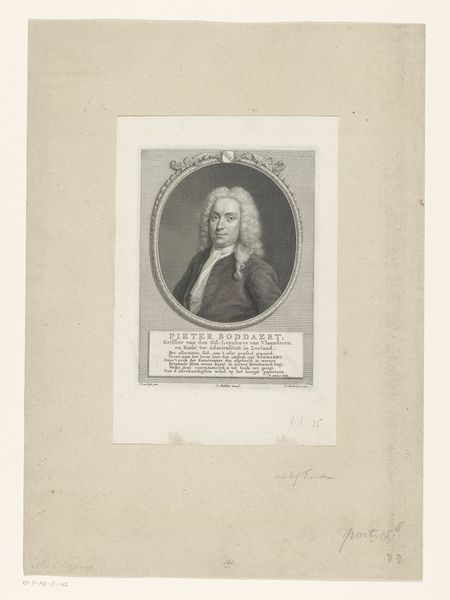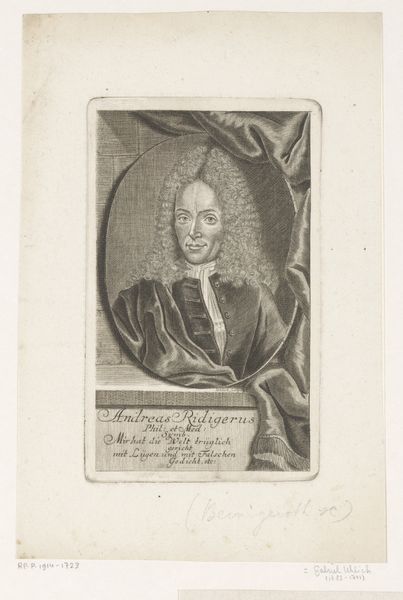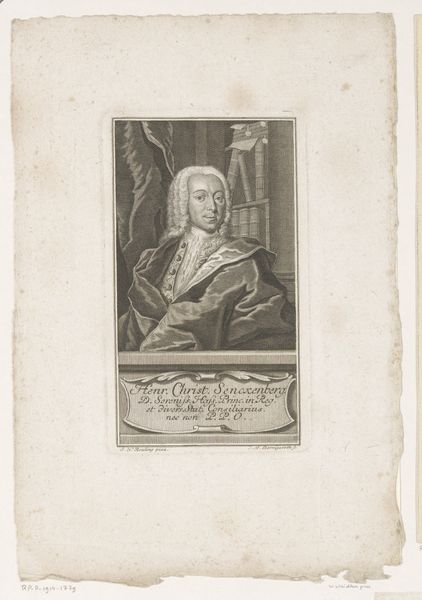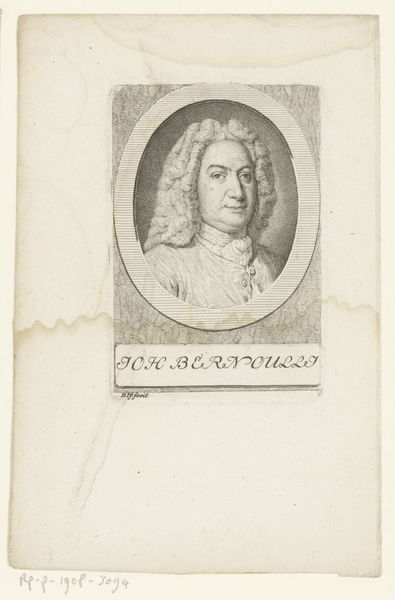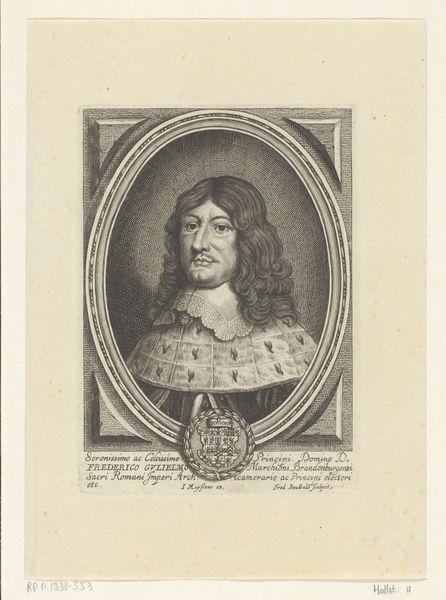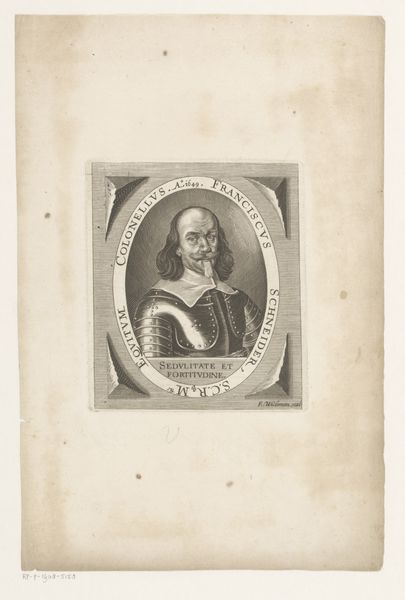
engraving
#
portrait
#
baroque
#
form
#
line
#
history-painting
#
engraving
#
realism
Dimensions: height 110 mm, width 75 mm
Copyright: Rijks Museum: Open Domain
This is a portrait of Johann Herdel, made by Georg Fennitzer, likely around the turn of the 18th century. It’s an engraving, meaning the image was incised into a metal plate, probably copper, and then printed. Consider the labor involved. The engraver would have used specialized tools to meticulously cut lines into the metal, each one defining the contours of the face, the folds of the clothing, and the decorative frame. The pressure of the press, the careful inking and wiping of the plate, the precise placement of the paper – all of these actions required skill and care. The resulting print, a multiple, could then be distributed and consumed. In this way, engraving was tied to the burgeoning print culture of the early modern period, a world of expanding literacy and commerce. The level of detail achieved speaks to a highly developed tradition, one that elevated technical mastery to an art form. This portrait invites us to reflect on the relationship between art, labor, and the networks of exchange that shaped early modern Europe.
Comments
No comments
Be the first to comment and join the conversation on the ultimate creative platform.
